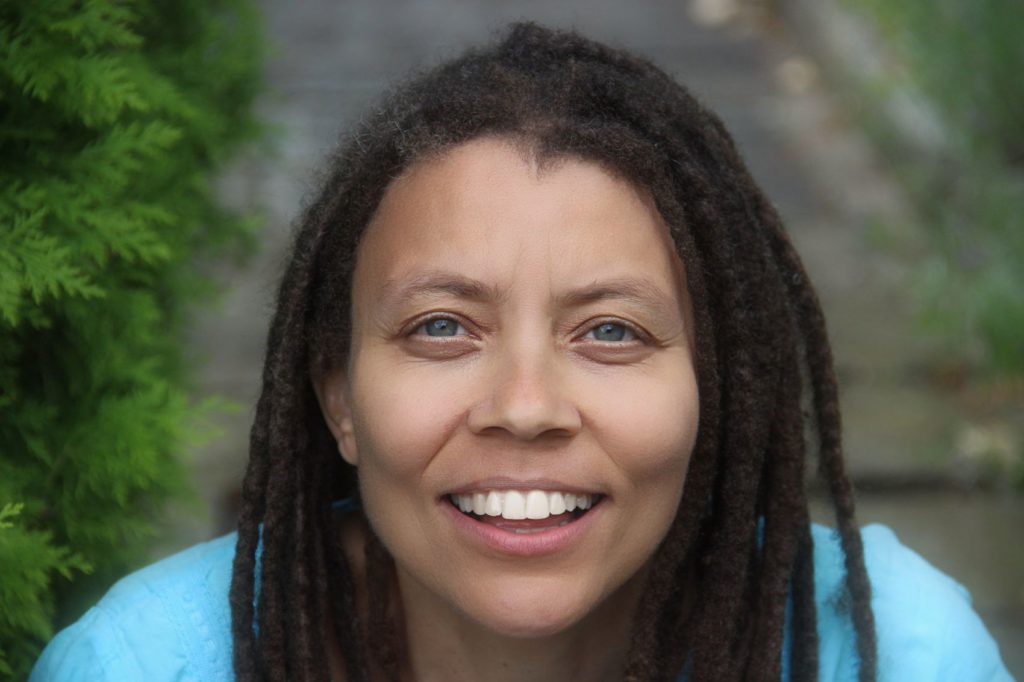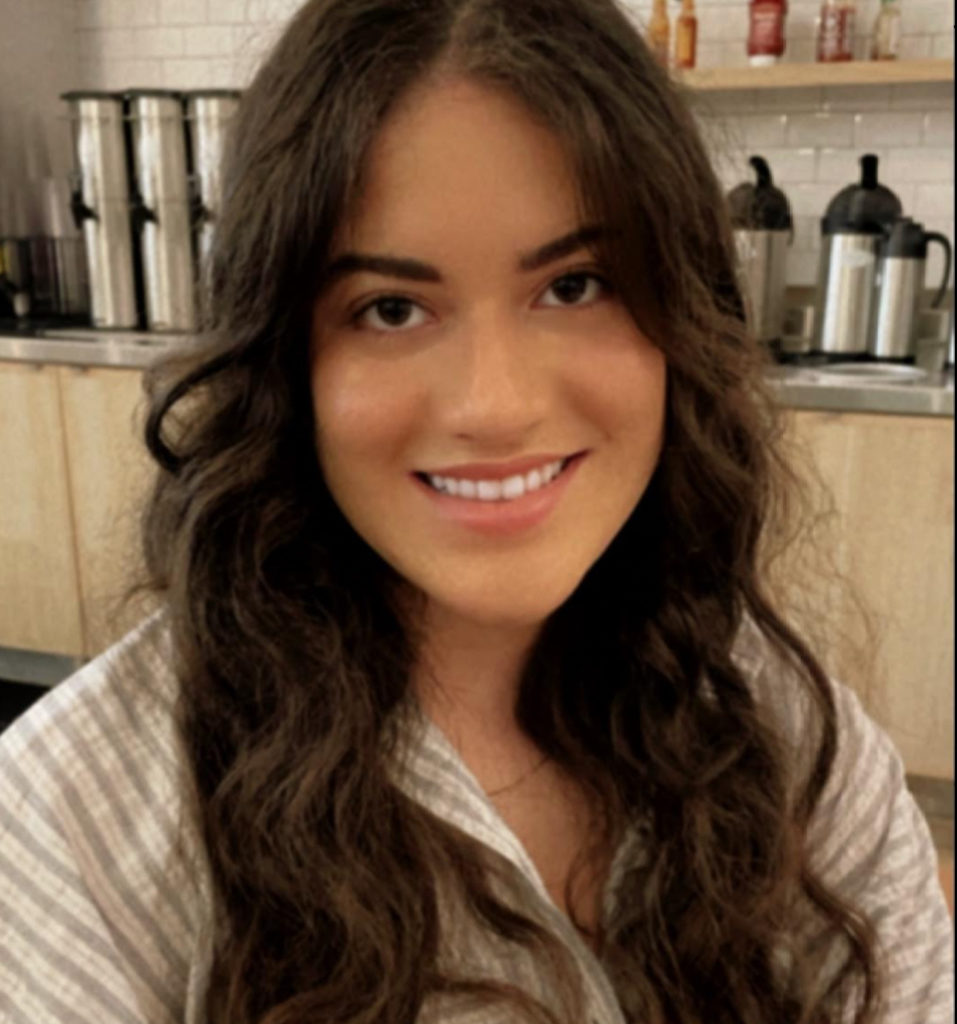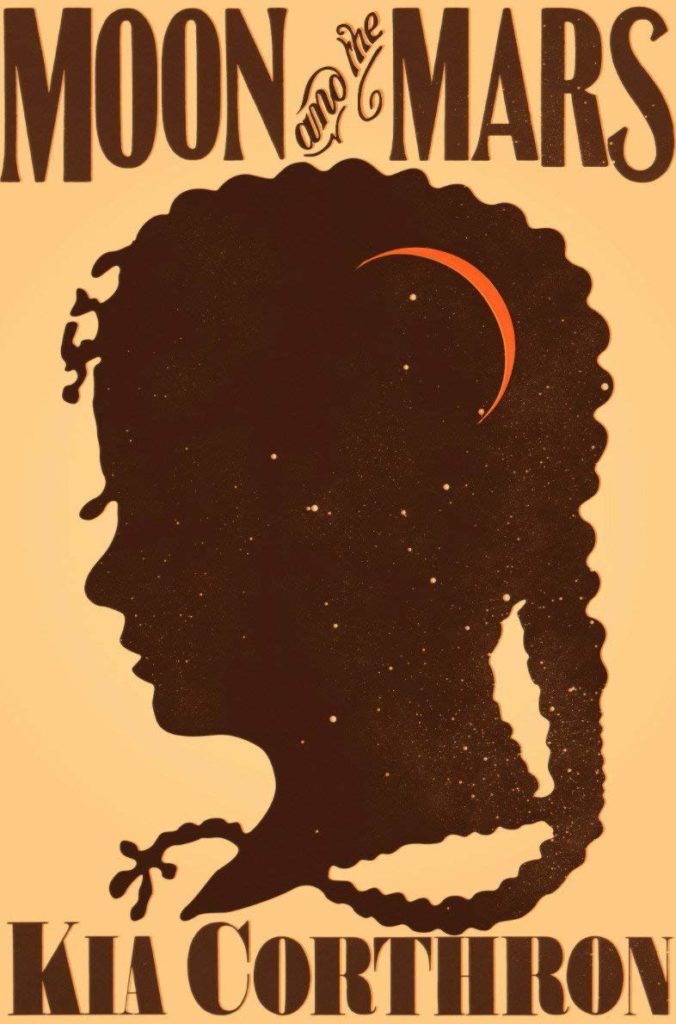NEW ORLEANS REVIEW
I have some questions about the leading character of Moon and the Mars, Theodora Brooks, also known as Theo. Throughout the narrative, we experience a first-person perspective of Theo’s life in the impoverished setting of Five Points, New York City, in the years before and after the Civil War. Why was it important to you to provide the readers with this perspective of such pivotal moments in history, politics, and racial conflict through the lens of an orphan biracial girl, and later woman, in the novel?
KIA CORTHRON
I chose Theo as the main character because I wanted to explore black and Irish relationships at that time. Some [Irish] were immigrants, and some were born in New York City. The main part of the novel ends in the middle of the Civil War, and there is an epilogue at the end of the Civil War. That’s why I chose [Theo], because there was a particular dynamic – usually collaboration and cooperation between [black and Irish people], but sometimes there was competition, especially when set up through powerful political forces to try to divide the communities. Black people were on the bottom in New York, and the Irish were a close second as the poorest of any European community. There were also Native Americans, [represented] through the character of a Lenape girl who is Theo’s friend. For the most part, because native people were being pushed to the west, there just weren’t that many in New York who would say they were [Native Americans] because it became, in some ways, dangerous to admit.
NOR
The novel not only focuses on the struggles of slavery and racial prejudice experienced by men, but also [the experience of] women such as Auntie Maryam, Auntie Eunice, and Hen. How do you think your novel expands on the concepts of gender and challenges the patriarchal narrative that has dominated the mainstream recounting of events surrounding the Civil War?
CORTHRON
For most of my life I have been a playwright, and this is my second novel. In my first novel, there were four protagonists, all men, so when I wrote this novel I wanted to focus on women, because of my conscious decision [to make] women the forefront of the novel and because I wanted the novel to have a female protagonist. Since most work about the Civil War focuses on men, I wanted to explore the perspective of the women at home, and without giving away too much in the book, the women who fought. And of course, the flux of the book surrounds what happens at home. It was fascinating to me to focus on the women’s workforce, [on work such as] needlework, since being a seamstress at that time was a huge job for a woman and, of course, very much underpaid. With women in general, especially Theo’s Irish family and her Black family, who were washerwomen usually washing for white clients, work was also divided by race. When I started my research, I didn’t realize that [about] black men. I also have a black girl being a chimney sweep, which was considered black work in New York. There are issues of how some of the jobs, which had once been slave work, began to change because when the Irish came these jobs were sort of taken from [black people]. As a matter of fact, black women working as domestic maids were replaced by Irish in certain instances.
NOR
How did the New York landscape and the prevailing issues of racial prejudice and gentrification in the city inspire the novel’s setting?
CORTHRON
I have lived in New York since 1988. I came to New York to go to graduate school at Columbia, which is technically Harlem, just gentrified. Living in New York made it a much more delicious project because of [imagining] the other half of 200 years ago, what it is like now, and what has changed. It was interesting, just being aware [of it] and writing it into the novel, that this biracial girl is unsure if she should go to Harlem because it was then considered a very white neighborhood. At that time, [Harlem] was mostly farmers and some wealthy people. In some ways, it was a lot of fun imagining the bustling downtown; it was a fascinating perspective. Seneca Village, which I talk about, was a multicultural neighborhood. There were immigrants, and there were Blacks and Germans. [That] was another interesting thing, that there were a lot of Germans at that time. In Seneca Village, the gentry, the owners, were black people, and when that neighborhood was destroyed to make Central Park, it was done with eminent domain [laws]. It was labeled as good for all the people, which is [an action] very much reflective of today. When neighborhoods are destroyed to build a freeway, they have destroyed many communities of color by splitting them apart. So that started way back then and continues today. Of course, as I mentioned at one point in the book, there was an idea at first that it wasn’t going to be Central Park but placed somewhere a little more east, but that would have meant taking land from the wealthy, so instead, that became Fifth Avenue where there were already these mansions. It became their backyard. So they took out all the poor people, and black people [who] were the gentry and were not all necessarily poor, but they were removed and the land values of the wealthy whites went up because now there is beautiful Central Park.
NOR
Aside from Theo’s point of view, readers are also provided with extracted texts of media on historical events throughout the plot. Why do you believe the use of literary allusions in this novel was important in immersing the audience in the storytelling?
CORTHRON
I felt that these [media], such as the newsboy’s cries, help to clarify the history because it’s so much a part of what’s going on in these people’s lives. At one point, early on, I thought I could just make up the newspaper pieces and put in whatever I wanted, but there was a very specific reason why I changed my mind. There was an incident that happened [in 1859], not in New York, but it affects the characters. It was known as The Weeping Time, [and it] was the largest slave sale ever. Insanely, it was so close to the Civil War that it felt like a backlash, like the South was saying, “We’re going to try to bring [slavery] back.” It was called The Weeping Time because, in legend, at the start of the sale the skies were pouring rain, and after the last sale happened of about 400 or so men, women, and children, the skies cleared. The reason that I didn’t [make up my own articles] was because, at that time, people did not [print] weather reports in the paper, and to make predictions, they used farmer’s almanacs. But there was a report of it in the New York Times; apparently, the rains in that area of the South had been so torrential that even the New York Times wrote about it. It was incredible to me because it verified that [The Weeping Time] had happened. For that reason, I thought if I cheated elsewhere, it would seem like I cheated here, so I didn’t want to cheat at all, and [I decided] they would all be real articles.
NOR
Can you talk about the significance of family in the narrative – specifically how the theme of duality present in the two family dynamics, the Cahills and Brooks, add to Theo’s fundamental understanding of race and oppression in society?
CORTHRON
I think something that may be interesting [to read] but was also very challenging to write was [the period of] 1857 to 1863. [Theo] was born in the 1850s. She is seven at the beginning and 13 through the main story, and then, of course, a little further in the future for the epilogue. What I came to do over a few drafts was to provide information so that, especially early on when she is seven, the reader may see this little bit of prejudice or stereotyping from the family that [Theo] doesn’t see yet but gradually grows into seeing. It was tricky. There would just be a little comment here or there because I don’t think of either family as being judgmental, because there was so much cooperation in that neighborhood. Obviously, Theo is an orphan, and neither of her parents is alive, but I did not intend for this intermarriage to be outright resented by each family because it happened all the time in Five Points. That’s not to say they didn’t have their ideas and stereotypes about the community, but I don’t think of it as outright hatred of the other community. There are direct comments that her black family makes. For example, what I said a moment ago, that at one time there were a lot of working-class jobs that were given to blacks because they were given them in slavery and as free people, but they lost most of them to the Irish, so there would be comments about that. With her Irish family, there was, particularly with her great-uncle hearing the comments from Democrats, which were the more conservative party at that time. The Republican party was very new, [standing for] anti-slavery, which was radical then. And there was Tammany Hall, famous for running the Democratic Party in New York, that was pitting the poor Irish against the blacks. [Theo’s great-uncle] buys into that a little bit and certainly in terms of class. For example, Theo’s cousin Maureen works as a domestic servant and serves a white family and is sometimes resentful of them. I deliberately wrote a scene where she asks Theo if she can assist her in serving this white woman’s group that wants to help an election to support a woman named Elizabeth Blackwell. She was the first woman physician, helping soldiers in the war where the casualties were astronomical, and even more people died of disease. [Blackwell] wanted to help in terms of this situation, so these were white liberal women. Meanwhile, when Theo and her cousin Maureen are around the table [with Maureen’s employers], there is a huge class divide and an anti-Irish feeling. This was an interesting thing you had, Tammany Hall, which supported the Irish. When people got hungry, they might send over baskets of food and similar things, but they were also this [political] machine and were certainly not anti-slavery. They were anti-abolition for many reasons. The flip side were the Republicans, who were anti-slavery, but some of them could be very friendly to black people and talk about the dirty Irish, so you have these very powerful communities separating the lower classes.
NOR
Another complex relationship that Theo develops in her time in Five Points is with her first love, Ciaran. What about these two characters make them a compelling pair and their evolving relationship an important aspect of the plot?
CORTHRON
For me, it’s a girl going from childhood to adolescence, so she’s going through everything. In this case, it happens to be [what] a cis-straight girl, which is not true of all the girls in the novel, would be going through at that time. I wanted to have this real, intimate life experience and relationship while the country is about to explode, and eventually goes into war. I just like the parallel of her growing up as a young girl, and she’s very much of both worlds, her black and Irish side, but as tensions start to rise, her loyalties become shifted. The character of Ciaran is also important because [Theo’s] Irish family who fled Ireland, her mother and aunt were children at the time and that was eleven years before, so one of the reasons I brought in Ciaran was because he had just arrived in New York and was fresh off the boat. I wanted that perspective of a new immigrant compared to the people who had been there for a while. Ciaran is a child, but children pick up languages quickly, so it wouldn’t take him very long to be Americanized during his first couple of years there. He comes immediately off the boat and has clear memories of Ireland, and he and Theo’s cousin Hen, from her black family, are pretty much her contemporaries. Also, the first chapter is about [Theo’s] regular life in Five Points. It is her seventh birthday, and she’s happy and spoiled because she gets all the attention. In chapter two, she gets this big shift in both families; there’s this new boy from Ireland who’s gone through some tragedies so suddenly she’s not the center of attention, and in her other family, there is the woman whose escaped slavery and is now posing as her aunt. There are new people to attend to, so it throws off her equilibrium a bit, her equilibrium being that she’s number one in these families because she is the youngest.
NOR
Why was it important for you to show the different and personal struggles of Ciaran and other characters from different backgrounds throughout the novel?
CORTHRON
I knew that I would go from the years 1857 to 1863 for the main part of the novel. I decided that every year would be its own section, and I would have chapters within that section. So for every year, I looked up the history and saw the national and local events that had happened, picked out events that were important for these characters, and divided them into chapters. When I got to 1862, the Dakota wars were going on and it was such a huge thing that I couldn’t pretend it wasn’t [happening]. I could have [just] had the newsboy say it, but it was such a huge event, and it struck me that I didn’t want to say, “That’s another part of the country; I shouldn’t deal with that.” I couldn’t do that, so I created a character who was Lenape and local, and for her, it was very affecting and thus was something else Theo was growing into in her maturity, learning about Native American struggles through her friend, who is half black and half Lenape.
NOR
You are a successful playwright and novelist; what’s next for you? Are there any special projects you are looking forward to working on next?
CORTHRON
I have a couple of plays that are going to happen. One will be in New York in a small theatre called New York Rep; they specifically asked me to write a [play] about an organization called A Second You. This organization was founded by a formerly incarcerated man who is a personal trainer, and who supports formerly incarcerated folks by hiring [them] as personal trainers. The other project is with Arena Stage, which is the biggest theater in Washington D.C. I was commissioned to write a play for them, which was supposed to happen before the end of 2022. We’re hoping with [disruptions from] COVID-19 that it will still be before the end of 2022. It’s a biographical piece about Anna Julia Cooper. Usually, my plays are inspired by something political, and then they’re very fiction. But this happens to be a historical play inspired by researched events. Anna Julia Cooper, a renowned educator, was born into slavery in Raleigh, North Carolina, and wound up teaching at M Street High School for black students in Washington, DC.



